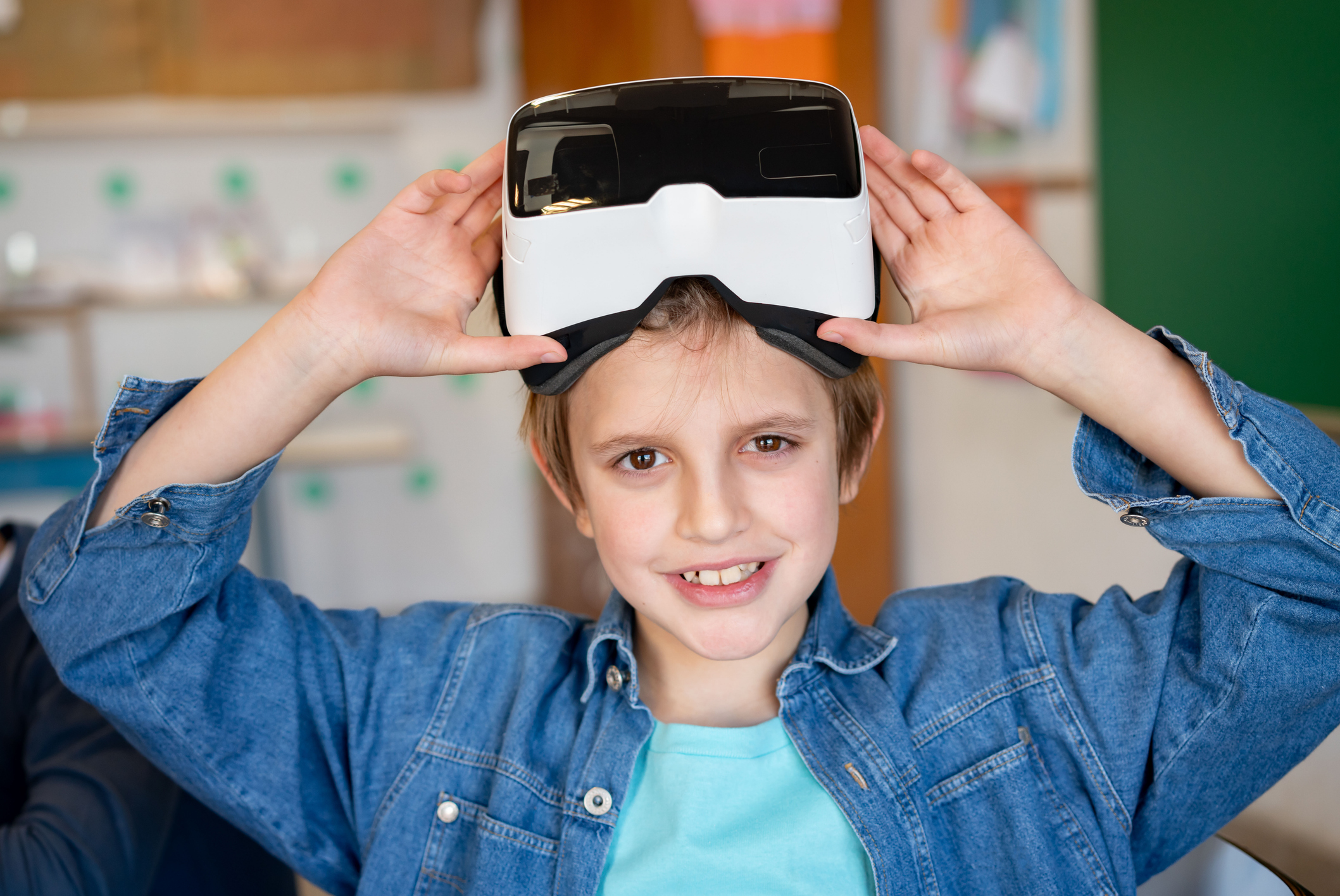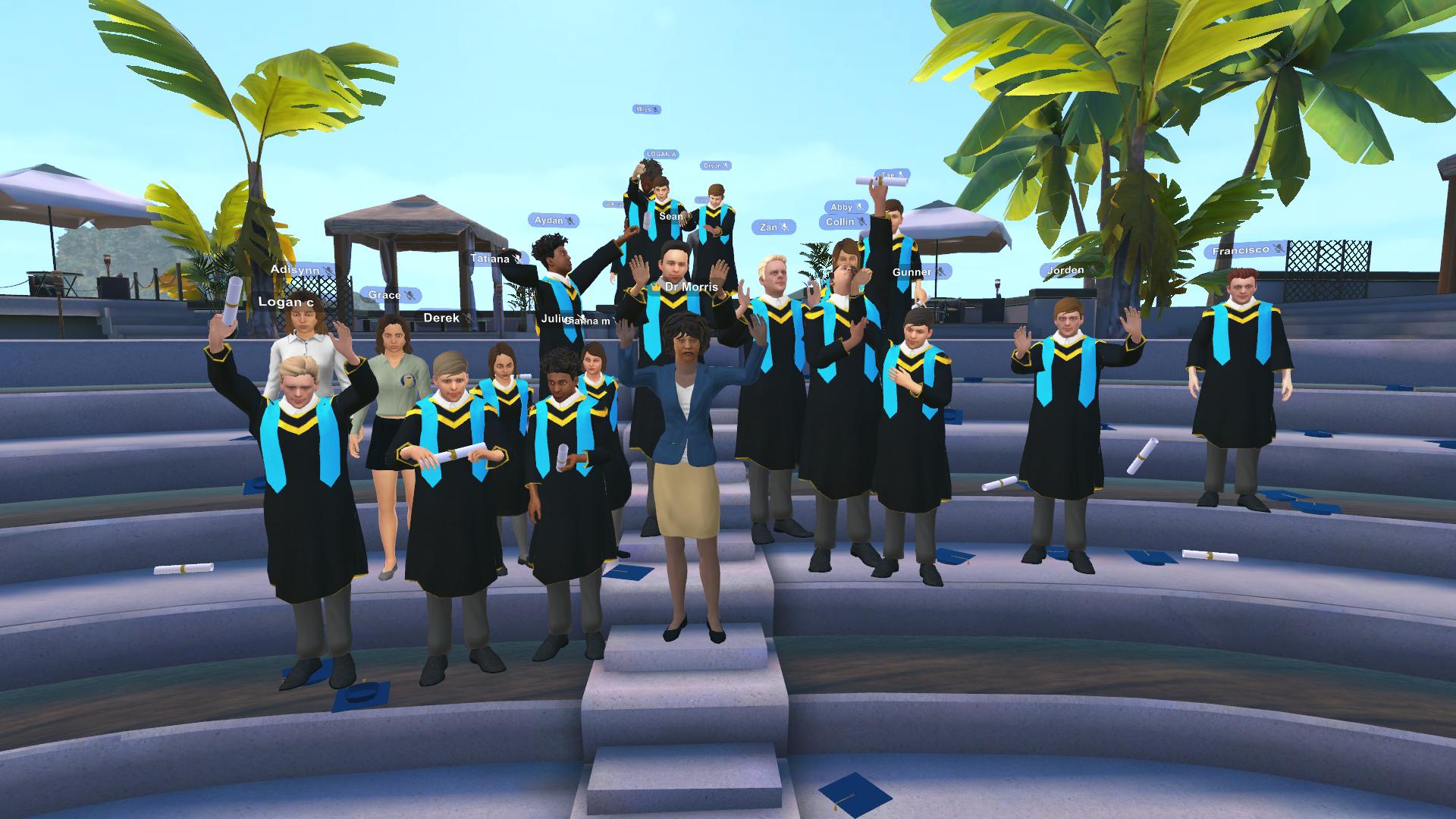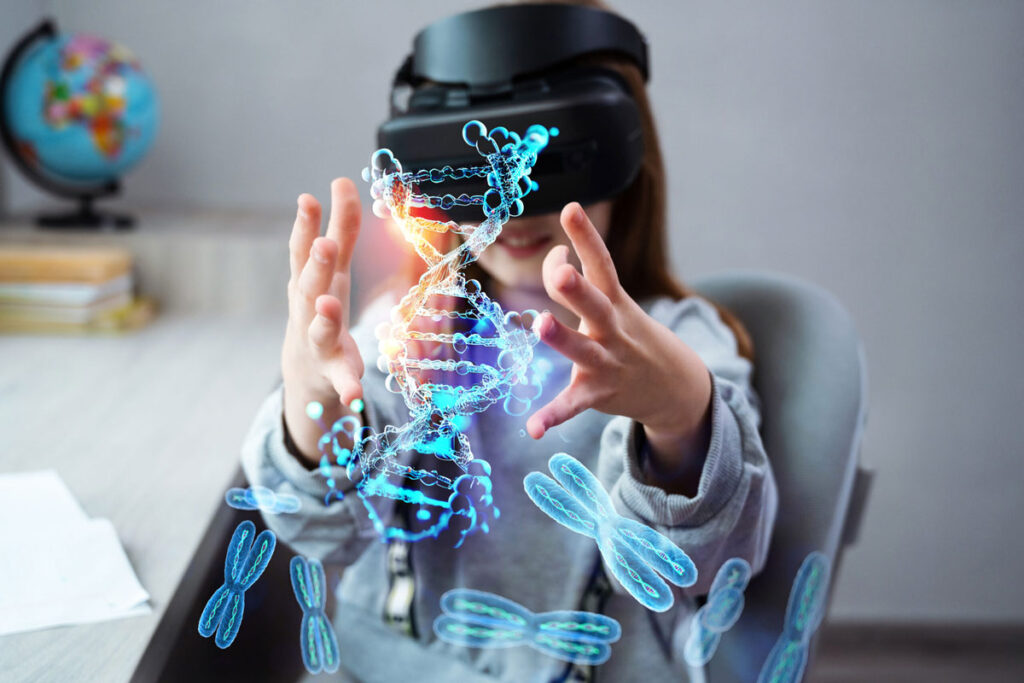By: Beverly Matoney | The Homeschoool Copywriter
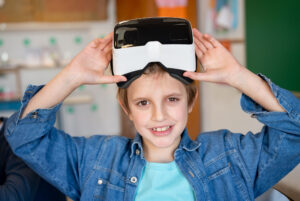 One of the hallmarks of homeschooling is the ability to tailor your child’s education to meet their individual needs and interests. Even if you choose to use a traditional curriculum and teaching style, you can still adapt structured lesson plans to align with your home education goals.
One of the hallmarks of homeschooling is the ability to tailor your child’s education to meet their individual needs and interests. Even if you choose to use a traditional curriculum and teaching style, you can still adapt structured lesson plans to align with your home education goals.
With the advent of virtual reality (VR) learning, you can create a truly personalized educational experience. Imagine your child being immersed in a virtual world where they can explore ancient civilizations, conduct science experiments, or even travel through the human body—all from the comfort of your home.
Let’s explore how you can integrate VR courses into your homeschooling curriculum and lesson plans, allowing you to chart a customized learning path for your children.
The Benefits of VR in Homeschooling
Virtual reality offers an innovative approach to learning that goes beyond textbooks and videos. It engages students in ways that traditional methods often cannot, incorporating multiple senses and learning styles at once. VR captivates students, making it an effective tool for memory retention and understanding.
With VR, your child can experience learning firsthand. Instead of just reading about history or watching a documentary, they can walk through a virtual reconstruction of Ancient Greece or witness historical events as if they were actually there. They can interact with historical figures and participate in recreations of events they’re studying—what better way to learn history than by being there?
Enhance Understanding of Complex Concepts with VR
VR can also enhance your child’s understanding of complex concepts in subjects like science or math. Students can visualize these concepts in 3D, making them easier to grasp. For example, they can manipulate molecular structures or observe the laws of physics in action. VR allows for safe, simulated experiences that might be impossible or too dangerous in real life, while also exposing your child to cultures and events from around the world.
Many VR programs include challenges and problem-solving tasks that encourage your child to think critically and make decisions in real time. Above all, VR can make learning exciting and immersive, which can be particularly beneficial for students who may struggle with traditional methods.
Incorporating VR into Your Homeschool Curriculum
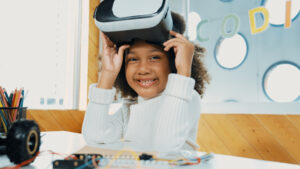 How can you incorporate virtual reality courses into what you’ve already planned for the year? One of the most significant advantages of homeschooling is flexibility. You can mix and match online courses and curricula, integrating VR experiences that align with your educational goals.
How can you incorporate virtual reality courses into what you’ve already planned for the year? One of the most significant advantages of homeschooling is flexibility. You can mix and match online courses and curricula, integrating VR experiences that align with your educational goals.
To outline your learning objectives, ask yourself a few questions:
- What subjects does your child enjoy? Are they more inclined toward science, history, literature, or art?
- How does your child learn best? Do they thrive in hands-on activities, or do they prefer visual and auditory learning?
- What is your child’s age and skill level? Match the complexity of the VR courses with your homeschooler’s learning level and existing knowledge.
Exploring Available VR Classes
Next, research available VR classes. Our platform offers virtual reality learning experiences adapted for different subjects and age groups. Here are a few examples of VR courses you might consider:
- Engaging History Courses: Take students through historical events or allow them to explore ancient civilizations.
- Interactive Science Labs: Conduct experiments in a virtual lab setting, providing a safe and controlled environment for exploration.
- Cultural Immersion through Language Courses: Practice in a virtual setting by interacting with native speakers or navigating cultural landmarks.
Blending VR with Traditional Learning Methods
While VR is an exciting addition to any homeschool experience, it doesn’t have to replace traditional learning methods. To create a blended learning environment, you can assign traditional reading or projects that complement the VR experience. Or, use a VR course for deeper exploration after covering material through books or lectures. Create a schedule that balances both VR and traditional learning, ensuring that your student receives a well-rounded education.
Reinforcing Virtual Lessons with Hands-On Activities
You can also use virtual experiences as a springboard to actual hands-on activities in your home. For example, after a VR science lab, conduct a similar experiment using household items to reinforce concepts learned in the virtual environment. Following a VR history tour, encourage your student to create a project or presentation about what they learned.
Assessing Progress and Adapting Your Approach
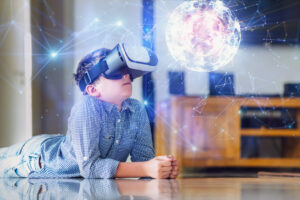 As with any educational approach, it’s essential to assess your homeschooler’s progress and adjust the learning plan as needed. Regularly check in on their understanding of the material and engagement levels. Ask questions like:
As with any educational approach, it’s essential to assess your homeschooler’s progress and adjust the learning plan as needed. Regularly check in on their understanding of the material and engagement levels. Ask questions like:
- What did you enjoy most about the VR experience?
- How do you think it helped you understand the topic better?
- Are there areas where you feel you need more support or exploration?
The assessments and feedback you gather will help you refine your homeschooling journey, ensuring it remains effective and engaging.
The Future of VR in Homeschooling
As technology continues to evolve, the scope of virtual reality in homeschool education will likely expand. You might find more immersive experiences that include augmented reality (AR), artificial intelligence (AI), and interactive simulations that further enhance learning.
Remember to start small by incorporating one or two VR experiences into your weekly homeschool routine. This allows you and your child to get comfortable with the technology and assess its effectiveness.
Enrich Your Child’s Education with VR
Incorporating virtual reality into your homeschooling approach can significantly enrich your child’s educational experience. By mixing online courses with curricula, you can design a personalized learning journey that captures their imagination and attention. As you blend traditional methods with VR, continue to incorporate hands-on activities, and regularly assess your child’s progress to create a well-rounded homeschool experience.
With VR, the possibilities are endless and growing every day. Embrace this opportunity to integrate VR in your lesson plans and inspire a lifelong love of learning in your homeschool!
About the Author: Beverly Matoney
Beverly Matoney is a wife, mother to two wonderful adult children, and writer living in northeast Georgia. She began her career in sales and marketing, but eventually opted for the stay-at-home life. When her oldest child was three, she and her husband decided homeschool was the best path for their family. That was way back in the early 90s when homeschool was just beginning to gain steam as an education alternative. But what an adventure it was!
Fast forward 20+ years, and their children have grown, graduated from homeschool, gone to college, and started their own lives. What’s a former home educator to do? She follows another dream she had of being a writer.

